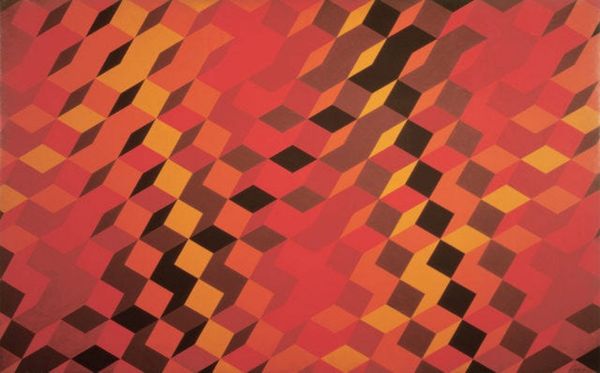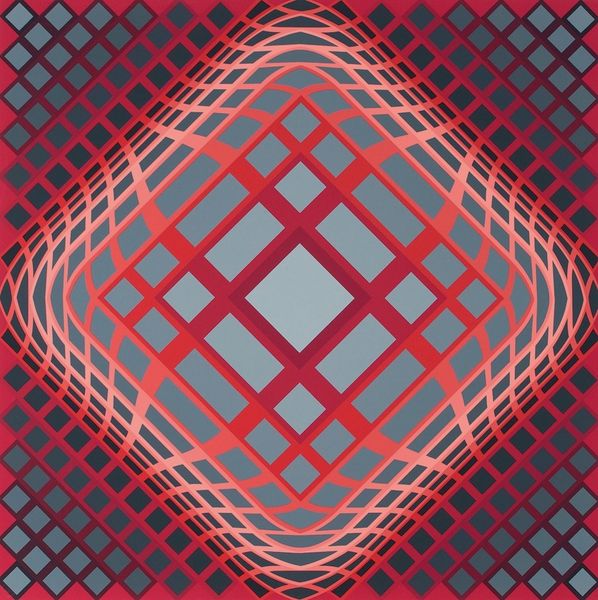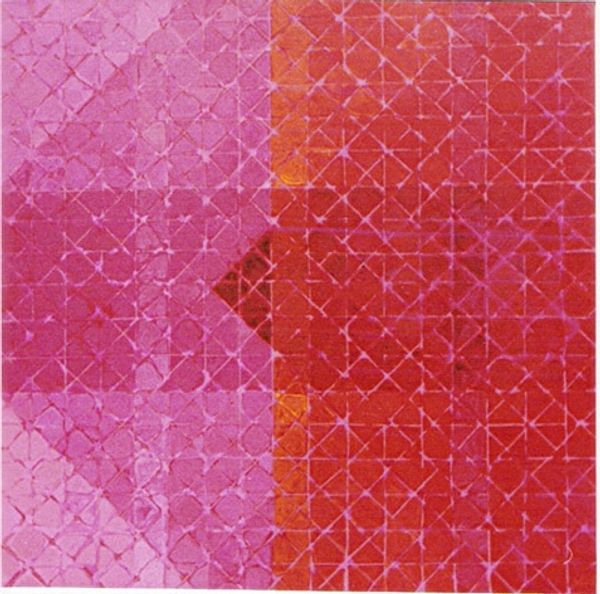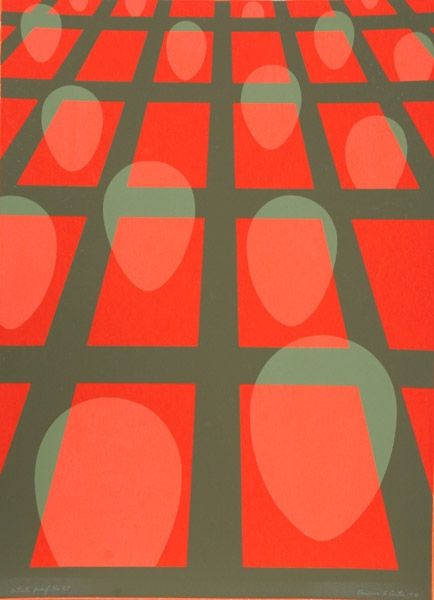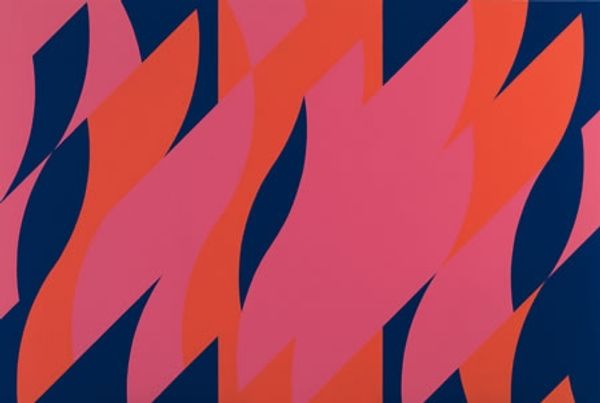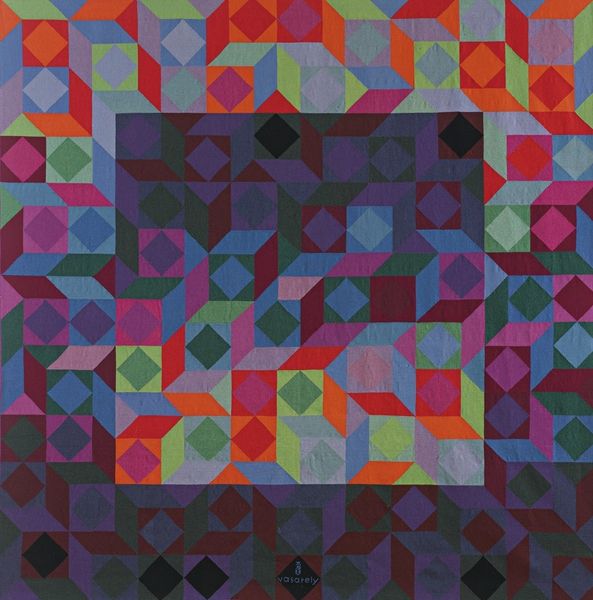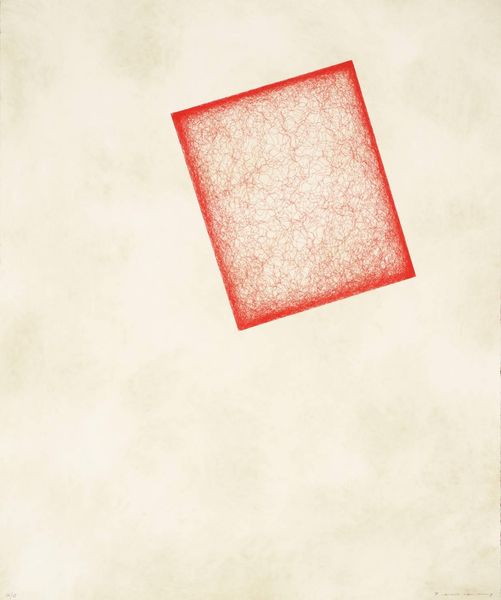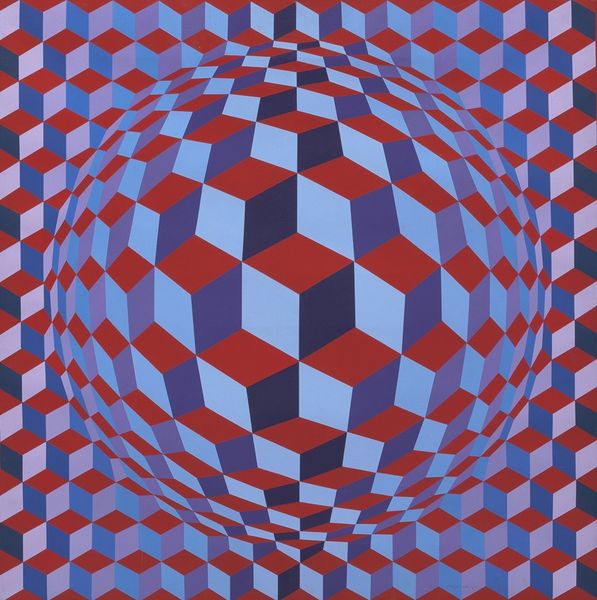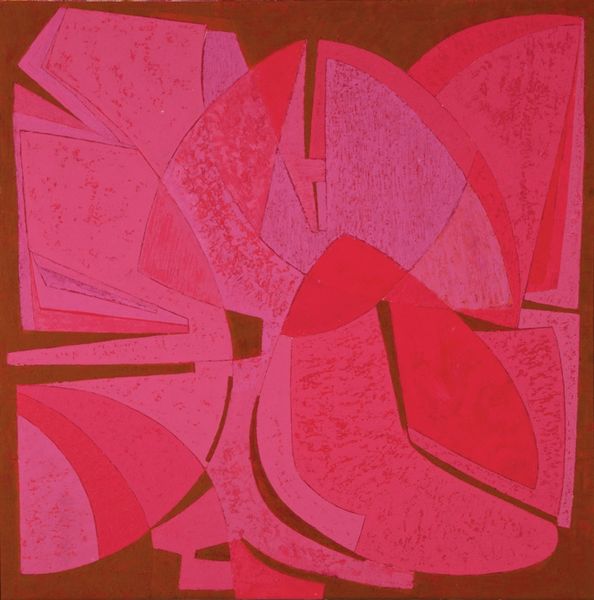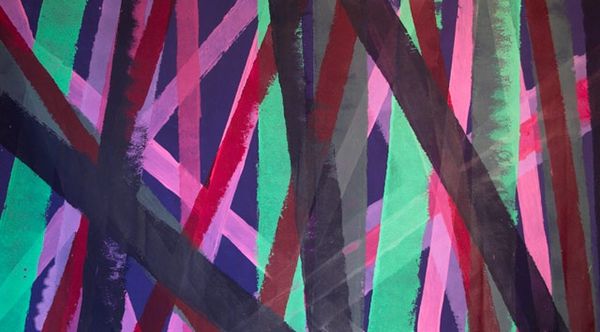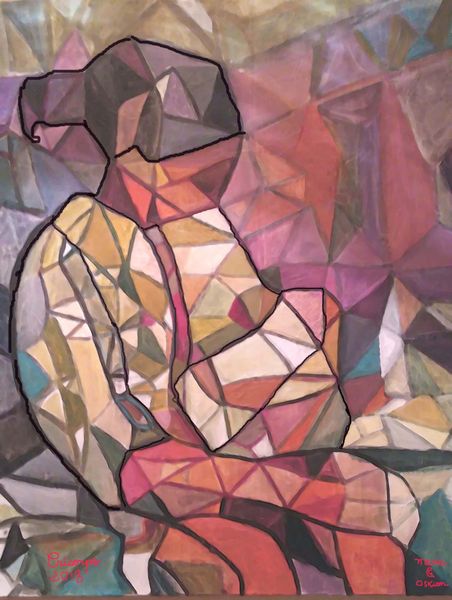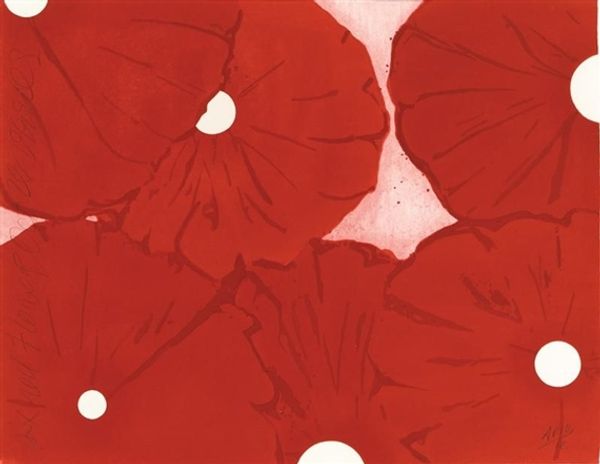
acrylic-paint
#
acrylic-paint
#
geometric pattern
#
geometric
#
geometric-abstraction
#
modernism
Copyright: All image rights belong to Olos Estate
Editor: This is Mihai Olos’s *Lateinisches Friedhof* from 1988, created using acrylic paint. The interlocking red geometric forms give me the sense of peering into an impossible architectural structure, like something out of an M.C. Escher print. How do you interpret this work? Curator: It’s fascinating how Olos merges geometric abstraction with a title evoking a "Latin Cemetery," isn’t it? Considering the socio-political climate of 1988, before the fall of the Iron Curtain, I see a powerful statement. Think about how art from the Eastern Bloc often navigated censorship through abstraction. Do you see a tension between the apparent playfulness of the geometric forms and the weight implied by "cemetery?" Editor: Definitely. The rigid geometry could represent the restrictive systems of the time, but the repeated patterns feel almost like a coded language or a form of suppressed expression. Curator: Precisely! The repetitive patterns, the subtle variations in hue... it speaks volumes about the strategies artists used to critique power structures indirectly. The “cemetery” might symbolize the death of individual freedoms or perhaps even a burial ground for cultural identity within that context. Does knowing this history shift your initial impression? Editor: Absolutely. It goes from being an interesting optical illusion to a commentary on the constraints of expression and identity under political repression. Curator: And that, ultimately, underscores the vital role art plays in reflecting and challenging our world, regardless of the prevailing power structures. Editor: I had not thought about the broader cultural context. I am glad that it ended up shifting the overall view.
Comments
No comments
Be the first to comment and join the conversation on the ultimate creative platform.
